
Browse an alphabetical list of articles about the Holocaust and World War II. Learn more about topics such as the Nazi rise to power, how and why the Holocaust happened, life in Nazi camps and ghettos, and the postwar trials.
<< Previous | Displaying results 351-396 of 1105 for "Article" | Next >>
Learn about France during the Holocaust and WWII, the liberation of France, postwar trials, and the legacy of Vichy France’s collaboration with Nazi Germany.
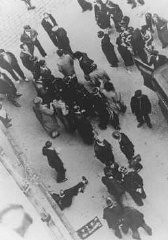
Frances Perkins was FDR's secretary of labor. Learn about her role in the rescue of European Jews whose lives were threatened by the Nazi regime.

Read the Jewish Partisan Educational Foundation's short biography of Frank Blaichman.
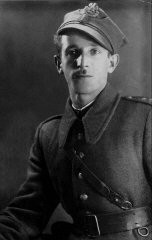
Learn more about Frank Bleichman, a Polish partisan who resisted and fought against the Nazis during World War II.
Explore Frank Liebermann’s biography and learn about his experiences of antisemitism in his home town in Germany before World War II.
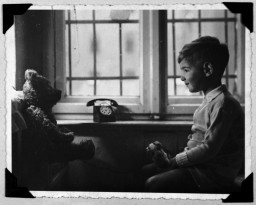
Franklin D. Roosevelt was 32nd president of the US. Learn about the domestic and international challenges FDR faced as president during World War II.
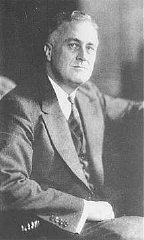
Franz Oppenheimer was a sociologist and economist who expanded on tenets proposed by Karl Marx. Two of his works were burned under the Nazi regime in 1933. Learn more.
Franz von Papen was one of the leading German officials tried during the International Military Tribunal at Nuremberg. He was acquitted of all charges.
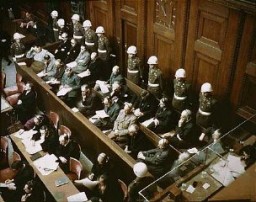
Franz Werfel was an Austrian poet, modernist playwright, and novelist. Several of his works were burned during the Nazi book burnings of 1933. Learn more.
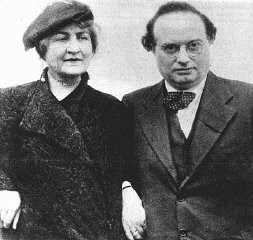
Adolf Hitler repeated the pre-existing claim that Jews used Freemasonry to achieve their political ends. Learn more about the history of Freemasonry.
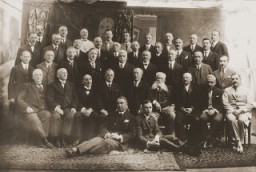
Nazi propaganda linked Jews and Freemasons and claimed there was a “Jewish-Masonic” conspiracy. Learn more about Freemasonry under the Nazi regime.
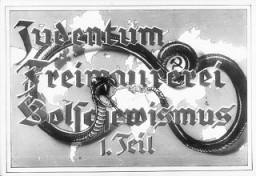
Learn about the Freiburg subcamp of Flossenbürg, including its establishment, prisoner population, and conditions there.
Friedrich Engels was a philosopher and political economist. He co-authored communist and socialist books with Karl Marx. His work was burned in Nazi Germany in 1933.
Friedrich Wilhelm Förster was an author, educator, and philosopher. In 1933, his works were denounced as subversive and burned in Nazi Germany. Learn more.
Brief overview of the charges against Fritz Sauckel, Nazi general plenipotentiary for labour deployment, during the International Military Tribunal at Nuremberg.
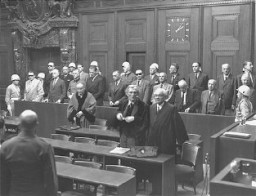
Learn about Fürstengrube subcamp of Auschwitz, including its establishment, administration, prisoner population, and forced labor and conditions in the camp.
After WWII, many Holocaust survivors, unable to return to their homes, lived in displaced persons camps in Germany, Austria, and Italy. Read about Fürth DP camp.
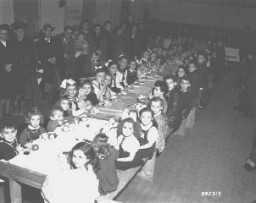
After WWII, many Holocaust survivors, unable to return to their homes, lived in displaced persons camps in Germany, Austria, and Italy. Read about Gabersee DP camp.
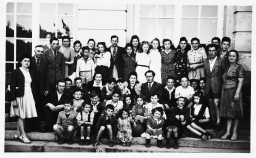
In April 1945, US troops encountered a barn on the outskirts of Gardelegen where the SS and its accomplices had massacred over 1,000 concentration camp prisoners.
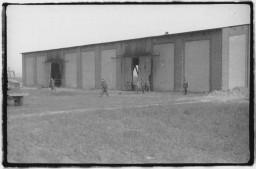
The Nazis used poisonous gas to murder millions of people in gas vans or stationary gas chambers. The vast majority of those killed by gassing were Jews.
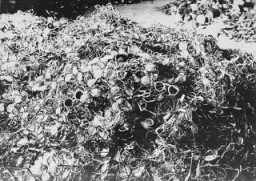
The Nazi regime carried out a campaign against male homosexuality and persecuted gay men between 1933 and 1945.
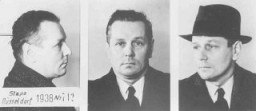
Learn about the history of discrimination against Roma in Europe and how the Nazi regime committed genocide against European Roma during WWII.
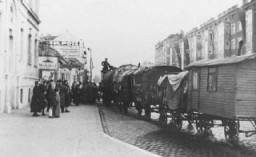
Key dates in the use of the term genocide as part of the political, legal, and ethical vocabulary of responding to widespread threats of violence against groups.
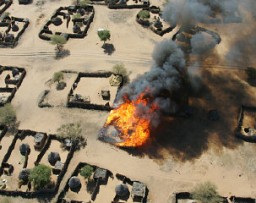
Georg Bernhard was a prominent financial columnist. The Nazis declared that German journalism must be "cleansed" of Jews. Bernhard’s work was burned in 1933.
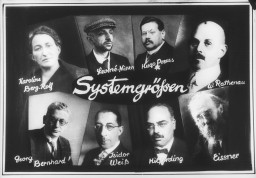
Georg Grosz was a German artist of the Dada movement. His books, which had many of his best-known plates, were burned in Nazi Germany in 1933. Learn more.
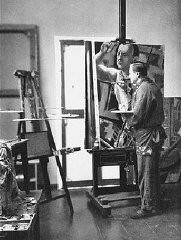
At great risk, George Kadish secretly documented life in the Kovno ghetto in Lithuania, creating a key photographic record of ghetto life during the Holocaust.
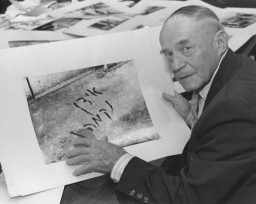
Germany invaded Poland on September 1, 1939. Learn about the administrative units that Germany established after annexing and occupying parts of prewar Poland.
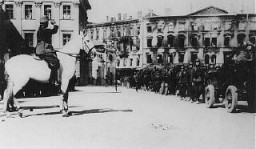
The German American Bund was an organization of ethnic Germans living in the US. It held a pro-Nazi, antisemitic, and US isolationist agenda.
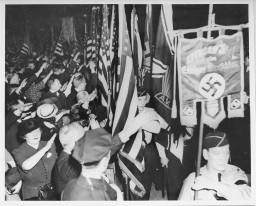
Some German and Austrian Jewish refugees fleeing Nazi persecution before WWII sought safety in Shanghai, which did not require entry visas. Learn about their experiences.
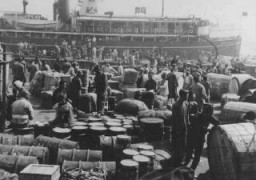
The German Armed Forces High Command, headed by Hitler, directed Germany’s armed forces before and during WWII. It was deeply complicit in the Holocaust and other crimes of the Third Reich.
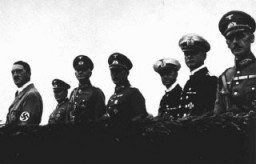
How did Christians and their churches in Germany respond to the Nazi regime and its laws, particularly to the persecution of the Jews? Learn more.
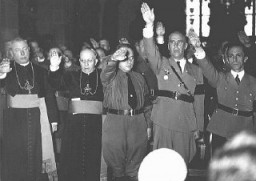
The German Foreign Office played an integral role in Nazi anti-Jewish policies and the Holocaust. Learn more about the office's responsibilities during that time.
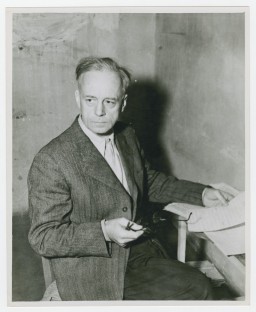
Adolf Hitler came to power with the goal of establishing a new racial order in Europe dominated by the German “master race.” This goal drove Nazi foreign policy. Learn more
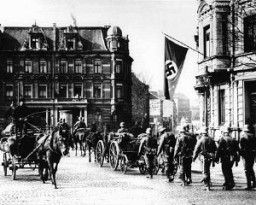
When Germany invaded Poland in September 1939, hundreds of thousands of Jewish and non-Jewish refugees fled the advancing German army. Learn about their experiences.

German troops overran Belgium, the Netherlands, Luxembourg, and France in six weeks starting in May 1940. Anti-Jewish measures soon followed in occupied western Europe.

Learn more about the plight of Jewish refugees who attempted to escape Germany between 1933 and 1939.

By September 1939, over half of German Jews had emigrated. WWII would accelerate the persecution, deportation, and later, mass murder, of the remainder of Germany's Jews.
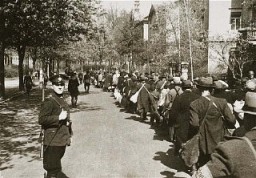
The German military played a vital role in the consolidation of Nazi power and persecution and mass murder of Jews and other groups. Learn more
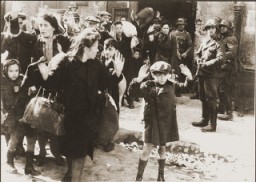
In Nazi Germany, German military personnel swore an oath directly to Adolf Hitler. Learn about the oath and its impact.
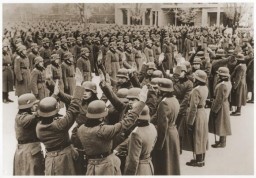
The Weimar Republic existed in Germany from 1918-1933. Learn more about German police during that time.
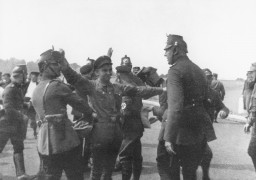
The Nazis utilized the German police for mass repression and genocide. Learn more about the Nazification of the police force from 1933-1939.
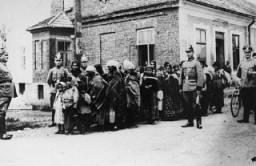
Adolf Hitler was determined to overturn the military and territorial provisions of the Treaty of Versailles. Learn more about Nazi German territorial aggression before WWII.
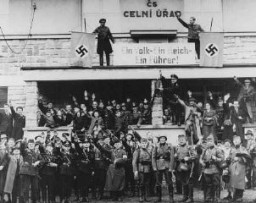
The European rail network played a crucial role in the implementation of the Final Solution. Millions were deported by rail to killing centers and other sites.
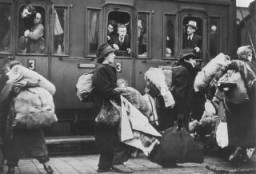
Despite Hitler’s popularity, there was also opposition. Learn more about German resistance, which ranged from non-compliance to assassination attempts.
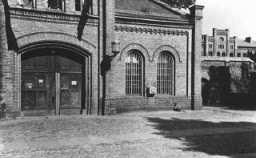
Throughout the 1930s and 40s, Nazi Germany invaded much of Eastern and Western Europe. Learn more about German rule in occupied territories.
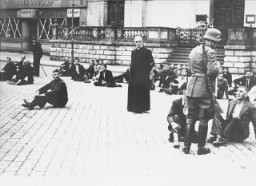
Between 1939-1942, Nazi Germany invaded multiple countries across Europe. Learn more about German expansion during World War II.
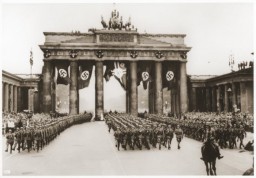
We would like to thank Crown Family Philanthropies, Abe and Ida Cooper Foundation, the Claims Conference, EVZ, and BMF for supporting the ongoing work to create content and resources for the Holocaust Encyclopedia. View the list of donor acknowledgement.